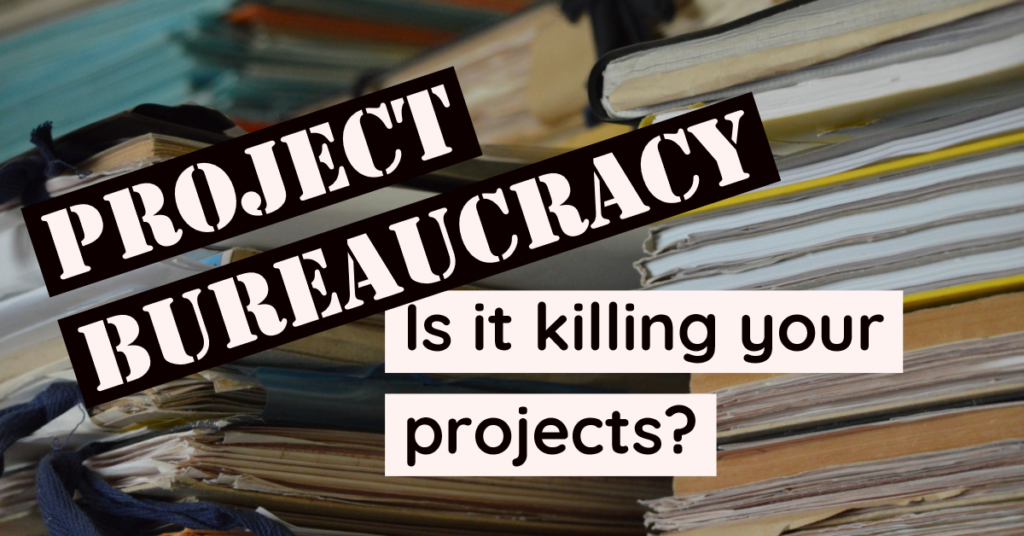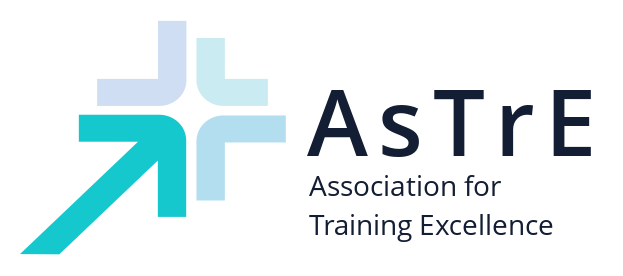
Is Project Bureaucracy killing your projects?
I have been working in the project management sector as a project management consultant and trainer, for more years than I care to remember.
One of the areas that as a trainer, I am always asked about is the amount of paperwork project managers have to complete – Bureaucracy! Also, statements akin to “Project Managers love paper and documents”.
Bureaucracy has become a bad word, as recorded by Javier Pascal Salcedo in 1989 “Its the art of making the possible impossible.”
Conversely Humberto Ramos 04/16 posts https://www.projectmanagement.com/blog-post/17353/The-trap-of-Bureaucracy “As it’s an Instrument to help the project manager organise their projects to support the achievement of the project goals”.
Please don’t disregard either view. There is a question that a project manager needs to answer- How much Bureaucracy – paperwork, do I need to have completed to deliver the project successfully and not disappear under the mountain.
I always remember when I was a rookie project manager: I had read that I had to have a whole list of documents. Now, as I look back and yes hindsight is a beautiful thing- with the experience that I have gained over the years. I could have been more discerning about which documents I should’ve used, to reflect the size and complexity of my project I was working on.
In this brave new world, we are all working within, where tomorrow is too late, I hear conversations inferring, that an easy way to usurp paperwork or the processes used, is to have less or no processes at all as they slow us all down. It seems to me that that is a recipe for project chaos!
In any project, we need the right level of bureaucracy to support the project governance and successful completion of the project, while bringing value, saving time and frustration by all concerned- not another form!
How can we steer clear of the bureaucratic trap? A phrase which stems from the agile, stable works with the concept of “just enough for the products we are creating to be acceptable”. In my view this can also apply to the supporting governance, what is “enough” to be acceptable?
This all seems pretty obvious. Here are my five top tips to have just enough bureaucracy to deliver a successful project. Steering clear of the bureaucracy trap!
Top Tips
1. Just Enough
What does just enough mean: Enough favours a working solution over, perfection, in other words, the documentation contains just enough information to fulfil its purpose and no more. One way to keep documents lean is to follow pragmatic programming’s DRY (Don’t Repeat Yourself) principle posted by Scott Ambler, December 16, 2004. There is a need to be very clear about the size complexity of your project. This will help you define what would be just enough. The larger and more complex the project, the more robust the governance systems need to be, with smaller less complex projects you will need just enough in order to keep control e.g. Information boards.
2. Automate your systems
If possible, automate your processes and systems as much as possible. This will reduce duplication and help with the reporting process for example. Can a simple computer program or online form be used instead, so people don’t have to fill out paperwork but can just fill in an online form where the basic information is stored and re-used so it doesn’t have to be re-entered? Using a computer program (online or off) will automate things so paperwork isn’t needed, or just eliminate the paperwork altogether if it’s possible
3. Know your stakeholders
Think about the needs of the stakeholders often they will ask for information that is key. However, somethings they will ask for the nice to have. So analyse your stakeholder information needs using prioritisation techniques such as MoSCoW, (Must Should, Could and Won’t for now) and who will be communicated with – Focus on a needs to know basis. Maximise the stakeholder investment and captures critical information, preferably describes information that is less likely to change. A document that contains rapidly changing information becomes out of date rapidly and therefore is difficult to maintain over time therefore its value is reduced.
4. Know what needs to get done.
Often bureaucracy happens when people focus on processes and forget about what the end result should be. Be clear about the project goals, and priorities within the scope. In addition, empower people as they are the subject matter experts they will know what needs to be done. When the focus is on action instead of bureaucracy, things get done. Documentation should describe “good things to know.”, information that isn’t obvious, such as design rationale, requirements, usage procedures and operational procedures.
5. Know the environment you are operating in.
If the project end goal is unclear, which is sometimes the case, put in place a more iterative and incremental approach to the project delivery. In this situation, there needs to be a clear understanding as to what would be the minimum viable product in order to gain acceptance – is it good enough! Conversely, if you are working in a regulated environment, the governance will have to be more structured, but that doesn’t mean that the systems and processes have to be cumbersome- automate. Instead of writing meeting, minutes use technology and record the sessions so that people can refer to them at any time. Make sure that processes used in this environment support timely decision making, ensure that the project manager isn’t a bottleneck, where decisions are delayed and things pile up. When a decision is required, try to make it quickly. Make sure you have all the necessary information, know what criteria you’re using to make the decision, and then make the decision immediately. The longer you wait the worse the problems become. Indecision is the enemy of action.
All seems obvious but what would be your top tips?
